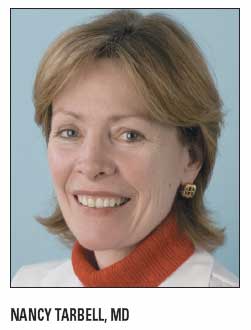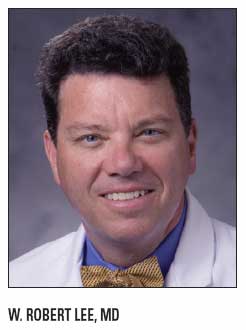Proton data suggest no greater risk of secondary malignancy
BOSTON-Retrospective data from Harvard Medical School and Massachusetts General Hospital may help alleviate fears that proton radiation therapy increases the risk of secondary cancer relative to conventional photon therapy.
BOSTON-Retrospective data from Harvard Medical School and Massachusetts General Hospital may help alleviate fears that proton radiation therapy increases the risk of secondary cancer relative to conventional photon therapy.
Of 503 patients who had undergone proton therapy at the Harvard Cyclotron in Cambridge, Mass., 6.4% developed a secondary malignancy within a median 7.7 years of follow-up. By comparison, secondary cancers were seen in 12.8% of 1591 matched patients treated with photon therapy (identified from the SEER database) after a median of 6.1 years.

After adjusting for the different follow-up durations, the incidence rate was 8.2/1000 person-years for proton therapy and 21.6/1000 person-years for photon therapy. “The surprise was that there was such a diff erence,” said Nancy Tarbell, MD, who presented her group’s findings at ASTRO 2008 (abstract 17).
“It will get a lot of scrutiny, but it is pretty interesting,” added senior author Dr. Tarbell, who is a professor of radiation oncology and dean of academic and clinical affairs at Harvard Medical School.
Previous research had indicated that the low-dose neutron particles that result from passive proton scanning may increase the risk of secondary cancers, a theory that has gained momentum in recent years aft er being articulated by Eric J. Hall, D.Phil., D.Sc., in the International Journal of Radiation Oncology, Biology, Physics (65:1-7, 2006).
The findings of Dr. Tarbell and colleagues appear to suggest that those fears are unfounded-particularly since the proton therapy patients received approximately 20% of their radiation dose as photons, which means the results may actually underestimate the difference in secondary cancer incidence between the two therapies. But because of the retrospective nature of their study and the limited nature of the SEER data, questions will undoubtedly remain.
Commentary

“I would say this information helps us feel better about carcinogenic risks of neutrons associated with passively scattered protons,” said W. Robert Lee, MD, professor of radiation oncology at Duke University Medical Center in Durham, North Carolina.
“But it’s a retrospective, historical comparison. The authors did the best they could to control for factors that might infl uence secondary cancers, but there’s a lot they couldn’t control. Another primary weakness is that secondary cancers tend to occur five or 10 years down the road. There’s not much you can do about that. This sort of study design doesn’t really allow you to tease out those things. But it should mitigate fears about the possibility that the rate of secondary malignancies will increase.”
Tarbell said that her group plans for a more detailed analysis of their data that would reveal whether specific cancer subtypes were associated with higher incidence of secondary malignancy, whether the secondary cancers were more likely to occur within the proton therapy field or outside of it, and whether patient age was a contributing factor.
The researchers are rapidly adding to their pediatric database now that proton therapy services have been relocated to MGH from the Harvard Cyclotron, where treating pediatric patients was logistically difficult. At MGH, about 60 patients per day are being treated, and about one-fifth are children, Dr. Tarbell said.
“The reason we’re so interested in pediatrics is that if you’re not giving radiation to developing normal tissues, the side effects should be much less,” she said. “These kids come in (for follow-up) looking better, and it’s our job to quantify that.”
Newsletter
Stay up to date on recent advances in the multidisciplinary approach to cancer.








